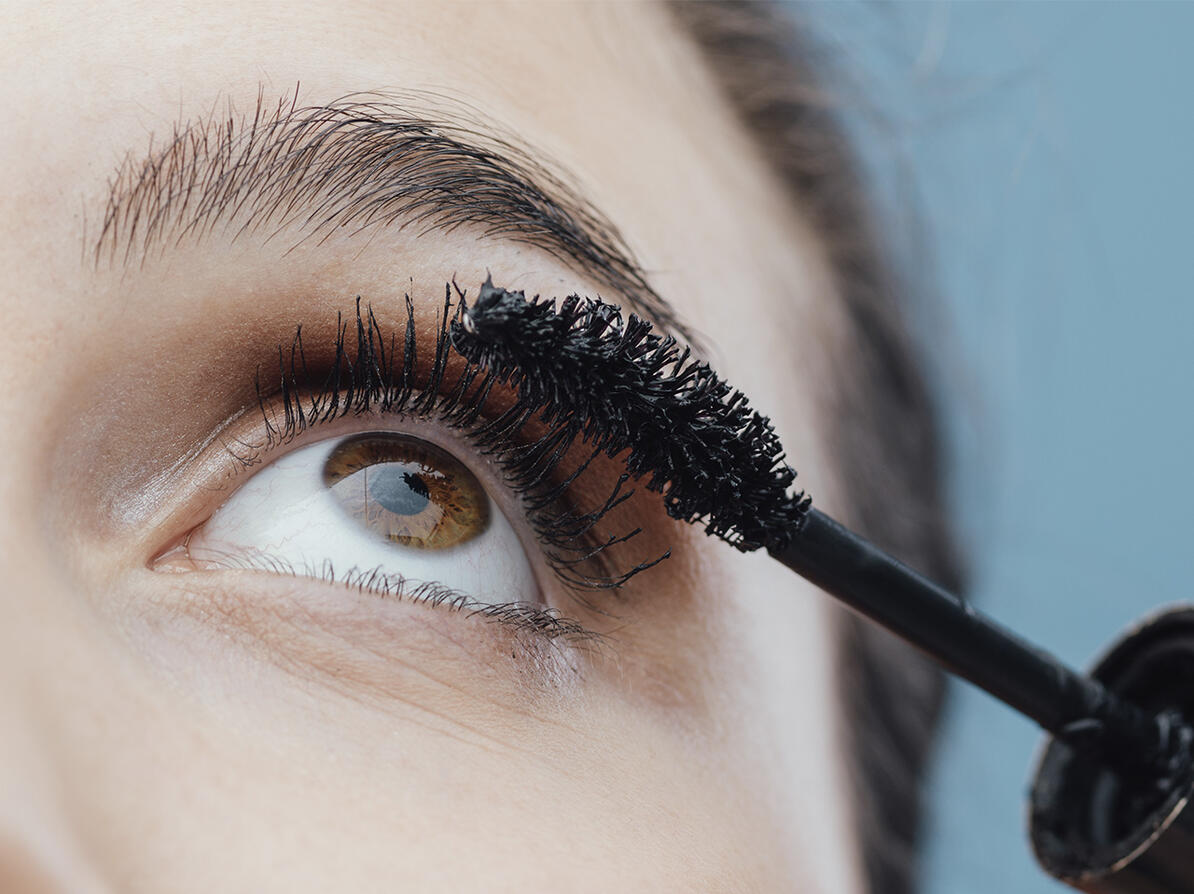Test of chemicals in mascara
In the test of 37 different kinds of mascara, almost half of the brands get the best rating. Be aware that some mascaras contain unwanted chemicals.

Mascara without unwanted chemicals is widespread
In the test of mascaras, the Danish Consumer Council THINK Chemicals has taken a closer look at the ingredients in 37 different brands.
We have tested the mascaras whether they contain unwanted chemicals that for example can cause allergies or are suspected of being endocrine disruptors.
Just under half of the mascaras in the test get the best rating (A).
Allergy-labeled mascaras in the test are good choices
Mascara with good rating in the test was in several cases allergy-labeled.
Allergy brands such as ‘The Blue Label’ or AllergyCertified make extra demands on impurities from nickel and other metals, which you cannot read about in the list of ingredients.
Choose an allergy-labeled mascara if you have a nickel allergy and have previously experienced a reaction to mascara. Read more about nickel allergy and mascara in the tab under the article.
Mascara can contain unwanted chemicals
In some cases, Mascara can contain problematic chemicals. For example, a mascara from M.A.C contains a fluorine substance. The fluorine substance is PTFE, also known as Teflon.
Fluoride substances are problematic for the environment because they accumulate in nature and are not degraded. They are also suspected of adverse health effects in humans.
The test also shows that some mascaras contain suspected endocrine disruptors, such as parabens, BHT or cyclopentasiloxane. Mascara with these substances gets the lowest rating (C).
The cocktail effect is problematic - not the individual mascara
The cosmetics rules require that cosmetic products, such as mascara, must be safe. Thus, you do not have to worry about the individual product.
However, the rules do not take into account the so-called cocktail effects across your daily life. Here, there is a risk that you are exposed to large amounts of unwanted chemical substances that may have a health effect.
Therefore, avoid unwanted chemicals where you can. That way, you can make an effort to keep your total exposure down.
About the test
-
In the autumn of 2020, the Danish Consumer Council THINK Chemicals purchased 37 mascaras in the Danish retail trade.
We have reviewed the ingredient lists to see if they contain substances that may cause allergies or are suspected of being endocrine disruptors.
We have sent the product names and ingredient lists to the manufacturers to ensure that there are no defects and that the products are still on the market.
This declaration test examines the declared ingredients. The test does not take into account the concentration in the individual product.
What we found
37 mascaras are included and are distributed as follows:- 15 mascaras get the best rating (A). They are free of a number of problematic chemicals.
- 9 mascaras get average chemical rating (B). They contain environmental harmful substances and / or perfume / plant extracts that can cause allergies.
- 13 mascaras get the lowest chemistry rating (C). They contain, for example, substances suspected to be endocrine disruptors, allergens or fluorides.
In the test, these unwanted substances are found, which you can look for yourself:
- BHT, which is suspected to be endocrine disrupting, is included in 7 products
- Parabens that are suspected to be endocrine disruptors are included in 4 products
- Chloroxylenol, which is an allergen, is included in 2 products
- Imidazolidinyl urea, which is an allergen, is included in 1 product
- PTFE, which is a fluorine substance, is included in 1 product. PTFE is also known as Teflon. Fluoride substances are problematic for the environment and are suspected of having undesirable effects on health
- Cyclopentasiloxane, which is suspected to be endocrine disrupting and is problematic for the environment, is included in 2 products
- Cyclohexasiloxane, which is problematic for the environment, is included in 1 product
Perfume is included in 5 products.
-
Chanel:
“Note that BHT and tetrasodium EDTA are widely used in the cosmetics industry due to their antioxidant and chelate binding properties, which make it possible to stabilize cosmetic formulas.
They are approved under current regulations and have been approved by the Cosmetic Ingredient Review in the United States. In addition, the European Food Safety Authority (EFSA) has approved BHT.”
L'Oreal, which stand behind the brands Helena Rubinstein, La Roche-Posay, Lancôme, L'Oreal, Maybelline, NYX, among others:
“Consumer safety is our first priority and we never compromise on the safety, efficiency and quality of our products. Kemiluppen does not take into account concentrations or exposure – this we do in connection with the statutory safety assessment we make of ingredients and products before marketing.
The products are considered safe, and consumers can safely continue to use them. ”
-
Nickel content is not assessed in the test. Nickel is not added, but can be found as impurities in the dyes. This means that you cannot read up on whether there is nickel in your mascara.
Therefore, it is not included in the assessment. The same applies to other impurities of chromium and cobalt.
‘Videnscenter for Allergi’ has previously researched whether they could find a connection between nickel allergy and eczema in the eye area. It did not find it.
It is therefore not clear whether people who suffers from nickel allergy react to, for example, mascara. Still, be aware if you have problems with nickel allergy or allergy to chromium and cobalt.
It may be a good idea to go for products marked with ‘The Blue Label’ or AllergyCertified. These brands place additional demands on the purification of impurities. You can also consult the manufacturer if purified dyes are used.
